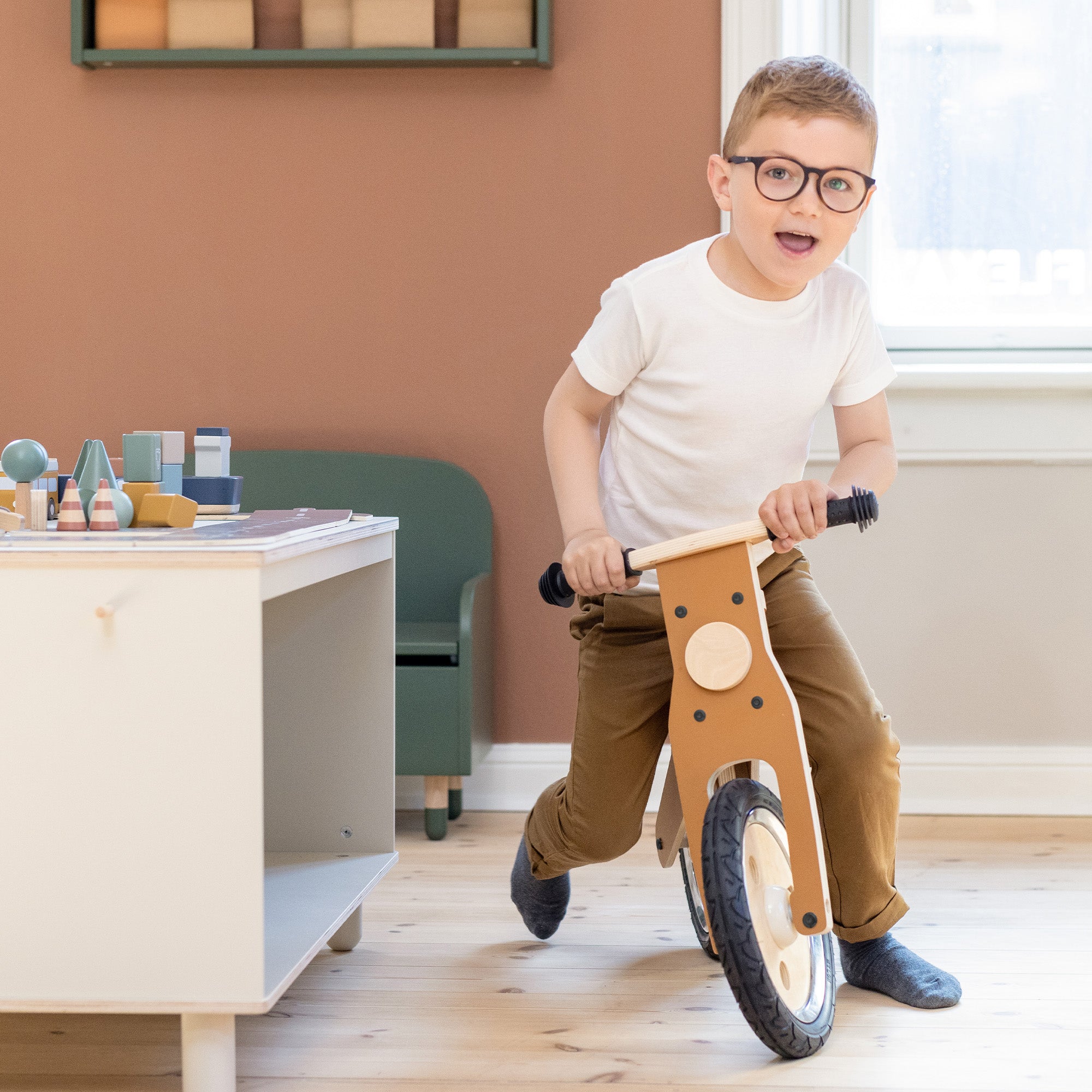Improving your child’s motor skills is improving your child’s control over their own body. It will open a whole world of new possibilities for your child. Just imagine, after months of sitting down, you’re suddenly able to stand up straight and take part in a ball game with your older siblings. Or you find out that you can jump – next stop, the sofa cushions!
Highlights:
- Schedule more physical play time to give your child a head start on their motor skills.
- Think about activating your child’s entire body.
- Swinging, spinning around, and turning upside-down is great for balance practice.
- Pushing, pulling, and stretching will improve your child’s muscle and joint coordination.
- Soft touches and deep pressures stimulate the outer and inner skin-layers.
Schedule More Physical Play Time
You probably don’t even think about it, but you use your motor skills every time you move a muscle in your body. For your child, it’s just not that simple. Children must learn to replace those quick and jerky baby movements with easy and intentional grown-up movements and that’s a difficult task which requires years of practice.
At the same time, attention has come to the topic of screen time and whether screen time is negatively affecting children’s motor skills.
“I see children develop their gross and fine motor skills at a much slower pace than children did just 20 years ago. This alarming tendency is a result of children sitting for long periods of time watching television or playing on a tablet, instead of engaging in physical activities. So, it’s our task as parents to schedule more physical play time and less inactive screen time,” says Danish Occupational Therapist, Mette Vainer Wegloop.
(The article continues below the images)
Activate your Child’s Entire Body
You can help your child get a head start in the game. And the best part? The job doesn’t even have to be hard – you can do it through play and in your everyday tasks. Just think about activating your child’s entire body, from head to toes, from the inner muscles to the outer skin-layer and watch your little one develop some impressive motor skills.
1) Balance & Body Posture
Dynamic movements like swinging, spinning around, turning upside-down, and walking-the-rope are all great exercises that will improve your child’s sense of balance. The exhilarating rush your little one gets from climbing up the stairs of a slide and gliding down will also challenge their entire body.
2) Muscles & Joints
Games where your child has to push, pull, squash, or stretch something are great for practicing the coordination of muscles and joints in their little bodies. So, let your child play dress-up and practice dressing in the morning – this simple, everyday task improves your child’s muscle and joint coordination.
3) Feel & Touch
Everything that gets in contact with the body’s largest sense organ, the skin, will stimulate your child’s sense of being in this world. Soft touches, like the brush of a feather or a kiss on the cheek stimulate the outer skin-layers, while deeper touches like an embrace from Mom and Dad activates the nerves in the deeper skin-layers.

